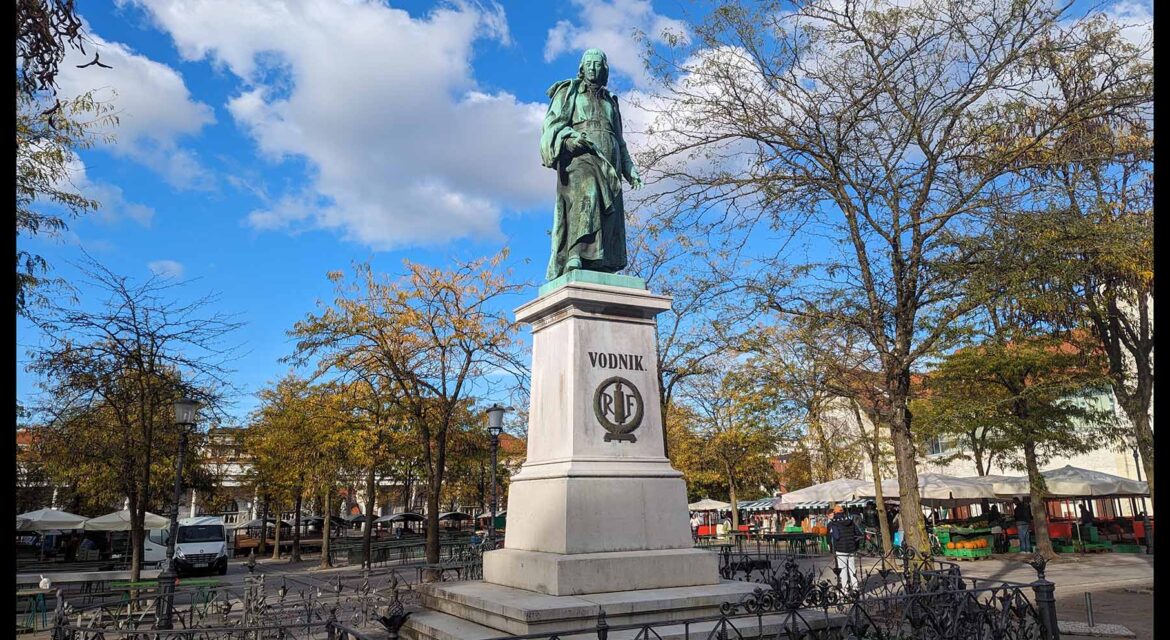 The Vodnik Monument has cultivated a sense of community directly and indirectly in Ljubljana, Slovakia. The defining feature of the Ljubljana Central Market as well as an icon utilized by businesses in the area, the Vodnik Monument has provided an identity for an area and the entire city in ways that have created opportunity and connection.
The Vodnik Monument has cultivated a sense of community directly and indirectly in Ljubljana, Slovakia. The defining feature of the Ljubljana Central Market as well as an icon utilized by businesses in the area, the Vodnik Monument has provided an identity for an area and the entire city in ways that have created opportunity and connection.

Bolstering the Importance of the Slovene Language
 The priest, poet and journalist Valentin Vodnik was a powerful voice in the late Enlightenment period. He is credited with popularizing and elevating the reputation of the Slovene language that now defines the region. He wrote the first grammar book in Slovene as well as the first dictionary. He died in 1819 and is regarded as the first real poet in Slovene, as well as the first journalist.
The priest, poet and journalist Valentin Vodnik was a powerful voice in the late Enlightenment period. He is credited with popularizing and elevating the reputation of the Slovene language that now defines the region. He wrote the first grammar book in Slovene as well as the first dictionary. He died in 1819 and is regarded as the first real poet in Slovene, as well as the first journalist.
In 1858, on the hundredth anniversary of Vodnik’s birth, an effort began to create a monument that honored his contributions to the culture. The Vodnik Monument was revealed in 1889 as part of a three-day celebration as the first public Slovene national monument. A line from the last verse of his poem called “Moj spomenik” is inscribed on the back of the monument. In English, it says: “No daughter no son, to come after me, enough memory done, my songs sing of me.”
The popularity of the piece has helped drive interest and activity at the Ljubljana Central Market, which has been recognized as part of the selected works of architect Jože Plečnik on the UNESCO List of World Natural and Cultural Heritage. Additionally, various businesses utilize Vodnik’s and likeness, highlighting how the piece has created a large sense of community that ties together audiences and eras to enable connection and opportunity across Ljubljana.

Celebrating an Identity
 Central Markets take place in squares all across the world, while statues that have a similar style to the Vodnik Monument are common in the region and beyond. However, the sense of community that the Vodnik Monument has enabled in Ljubljana transcends these similarities in ways that can be seen and experienced. This impact highlights what’s possible when a landmark is tied to the culture of a city and nation to become something more for an entire community.
Central Markets take place in squares all across the world, while statues that have a similar style to the Vodnik Monument are common in the region and beyond. However, the sense of community that the Vodnik Monument has enabled in Ljubljana transcends these similarities in ways that can be seen and experienced. This impact highlights what’s possible when a landmark is tied to the culture of a city and nation to become something more for an entire community.

